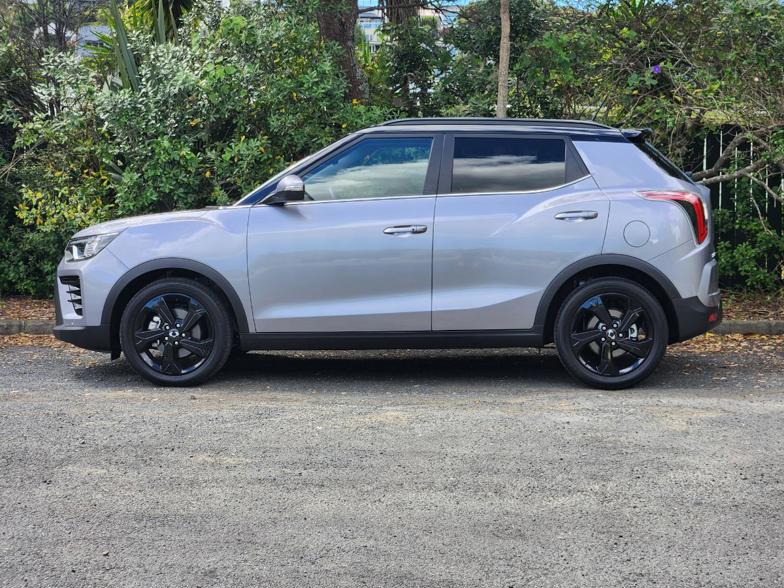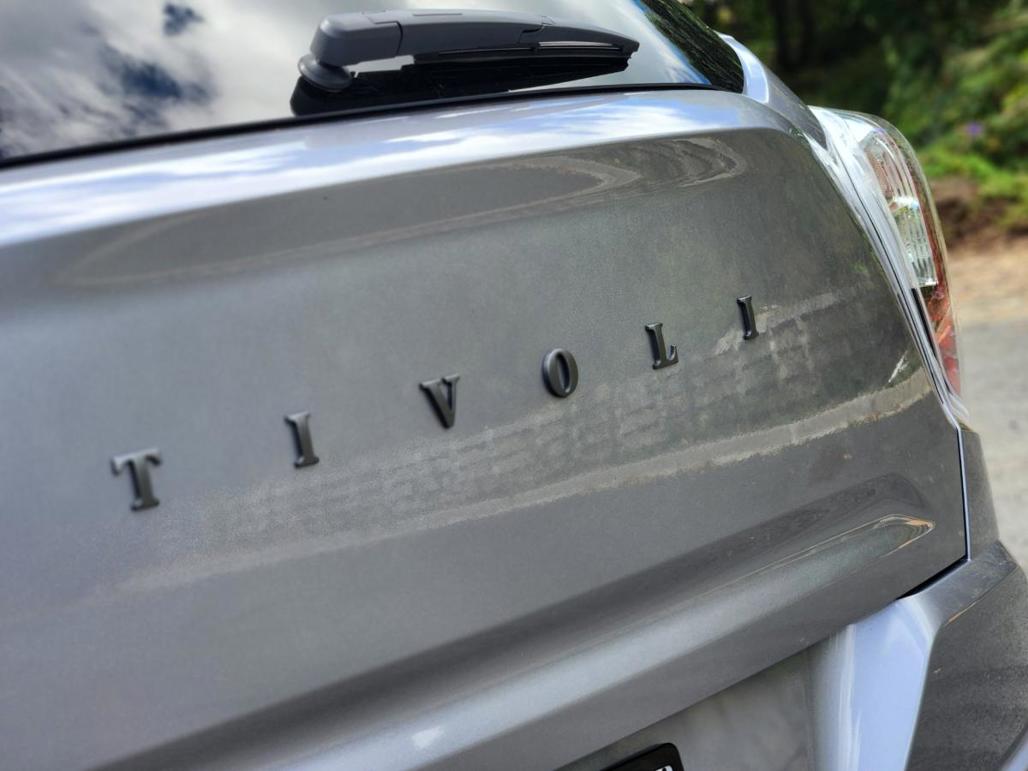Sometimes looks really can be deceiving. Take the SsangYong Tivoli, for example.
Approach it from the front and you would think it was an all-new model, with its angular headlights, slim upper grille and curious red ‘tabs’ being far-removed from the previous model’s more traditional nose.
But step slightly to the side and you will see that the nose is literally all that is different about the Tivoli, with the rest of it being very much business as usual.
Why just slap a totally different nose on it while not bothering to do much anywhere else? Well, that is all to do with SsangYong’s new identity as KG Mobility (KGM).

The rebrand from SsangYong to KGM follows the company’s purchase by the KG Group in 2022, a Korean chaebol (a family-run conglomerate) that has interests in chemical products and steel, with the company officially changing its name a year ago. Since then, the new branding has been rolling out around the world, with SsangYong New Zealand’s turn coming up this month.
And the Tivoli’s new face was one of the early steps in that process – you might notice that there is no SsangYong branding on that new nose whatsoever, with only a very small (and easily replaceable) SsangYong script on the rear.
So despite that fresh face (which, let’s face it, looks like an EV, which certainly won’t have been an accident), the Tivoli is largely the same thing that debuted in 2015 as the first all-new model under Mahindra’s ownership of the brand (and is actually also still sold in some markets as the Mahindra XUV300).

Which does mean that things are quite dated inside and, well everywhere except for the bits just in front of the bonnet. This is starkly apparent from the tiny 8-inch infotainment screen that at least offers Android Auto and Apple CarPlay, but little else in the way of modern tech.
Unlike the interior, which is perfectly satisfied with being stuck in 2015, the Tivoli received a new 1.5-litre four-cylinder turbo petrol engine in 2019.
The interior is perfectly... adequate. Decent quality, but hard plastics dominate proceedings here, which is... fine, I guess, while its central stack of infotainment and HVAC controls is reminiscent of an earlier time and utterly tolerable. The thoroughly acceptable (but largely flat) seats are, well, seats and the sound quality of the audio system is spectacularly passable.

Unlike the interior, which is perfectly satisfied with being stuck in 2015, the Tivoli received a new 1.5-litre four-cylinder turbo petrol engine in 2019, which is hooked up to a six-speed automatic transmission.
This too is perfectly adequate, without being exciting in any way. It does that job and that is enough. The transmission shifts gears. I mean, you could be tempted to add in some superlatives like “well” or “fine, I guess” on the end there, but the reality is it simply shifts gears.
SsangYong’s own brochure for the Tivoli heads up the section about the powertrain with “solid performance” and this description really is perfectly adequate too. Solid, but utterly unspectacular.

All of which is rather viciously damning the Tivoli with faint praise, which it largely deserves. But being perfectly adequate isn’t a crime, and it certainly isn’t necessarily a bad thing in a car. After all, if the price is right, being perfectly adequate could be a very good thing.
Just look at the Mitsubishi ASX – a perfectly adequate car for between $27,990 that does everything you really need, but not a lot more. But then, for under $30k, you don’t expect a lot more. You can get more expensive versions that offer more tech, leather and panoramic sunroofs, but it still tops out at $36k.
The transmission shifts gears. I mean, you could be tempted to add in some superlatives like “well” or “fine, I guess” on the end there, but the reality is it simply shifts gears.
Unfortunately for the Tivoli Turbo Limited, it costs $42,990, which is where you do expect more than just perfectly adequate.
ENGINE: 1.5-litre petrol turbo 4-cylinder POWER: 120kW/260Nm GEARBOX: 6-speed automatic, FWD CONSUMPTION: 7.0l/100km PRICE: $42,990.

How much is the KGM Tivoli Turbo Limited?
The quick answer is: too much. While the Tivoli is a perfectly decent car, there are plenty of other just as perfectly decent cars for significantly less money.
What are the key statistics for the KGM Tivoli Turbo Limited powertrain?
The Tivoli is powered by a 120kW/260Nm turbocharged 1.5-litre four-cylinder petrol engine. While you won't necessarily notice the presence of the turbo, it is a decently refined and responsive unit hooked up to a six-speed automatic transmission.
Is the KGM Tivoli Turbo Limited efficient?
A decade ago it would have been impressively efficient. Five years ago it would have been par for the course. Now the Tivoli scores a definitive "could try harder" for its fuel efficiency. KGM claims 7.0l/100km combined for the Tivoli, the reality is closer to 10.
Is the KGM Tivoli Turbo Limited good to drive?
Like everything else about the Tivoli, it is perfectly adequate without going over and above in any way whatsoever.
Is the KGM Tivoli Turbo Limited practical?
Yes, it is. The Tivoli can swallow 393 litres of cargo with its rear seats up, and folding them down gives you a completely flat floor thanks to the false floor. Passenger space is actually rather impressive, with excellent rear legroom and wide opening doors for easy access.
What do we like about the KGM Tivoli Turbo Limited?
The engine and transmission are refined for the segment, while the sheer spaciousness and usability of the interior make it an easy car to live with. Also, the new KGM nose looks adorably quirky and stylistically interesting.
What don’t we like about the KGM Tivoli Turbo Limited?
Everything just comes down to the fact that it costs about $10,000 too much.
What kind of person would the KGM Tivoli Turbo Limited?
Someone who wants a small and practical urban SUV or hatchback that offers plenty of space, unique looks and a perfectly adequate driving experience. Oh, and who is capable of negotiating a salesman into submission to get around $10k off that list price...











